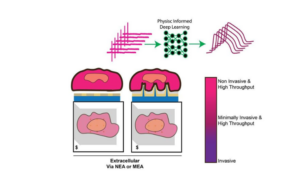The world of AI has seen a lot of new models recently, especially after Meta released the Llama3 and Llama 2 models in 2023. These models have sparked the development of many other cool AI models that help us understand and use language better. Some of these models include Mistral’s Mixtral-8x7B, Alibaba Cloud’s Qwen1.5, Abacus AI’s Smaug, and 01.AI’s Yi. They focus on making sure the data we use is good quality.
Using AI models on our devices, like phones, has changed how we work with language. But putting these on-device models together with ones in the cloud is even better. Nexa AI has a new idea called cloud-on-device collaboration. It means using both kinds of models together to make AI even more powerful. This is where Octopus v4 comes in.
Octopus v4 is like a smart conductor for all these AI models. It uses something called functional tokens to guide questions to the right model and make sure the answer comes back the best it can be. Octopus v4 is the latest version of its family, which includes v1, v2, and v3. It’s great at picking the right model, understanding what you’re asking, and making sure the answer is clear. It also uses graphs, a kind of smart map, to work well with different AI models.
Imagine Octopus v4 as part of a big system where each part is like a different language model. There are worker nodes, which are like individual models, and a master node, which controls everything. They all talk to each other to get the job done. Nexa AI suggests using Kubernetes, a special tool, to make sure everything runs smoothly.
To see how well Octopus v4 works, researchers tested it against other models using a special test. They used two versions of Octopus v4: one with 3 billion settings and another with up to 8 billion. Here’s an example of how you might ask it a question:
Question: What is the result when you find the slope of x^3 when x equals 2?
Answer: <nexa_4> (‘Determine the slope of the function f(x) = x^3 at x = 2, and explain what it means in terms of how fast the function is changing and the slope of the tangent line.’)
In short, Nexa AI has come up with Octopus v4, a smart way to use many AI models together. It’s tested well against other models, showing it’s really effective. In the future, researchers want to make it even better by adding more models and making Octopus v4 even smarter.
Source: Marktechpost




